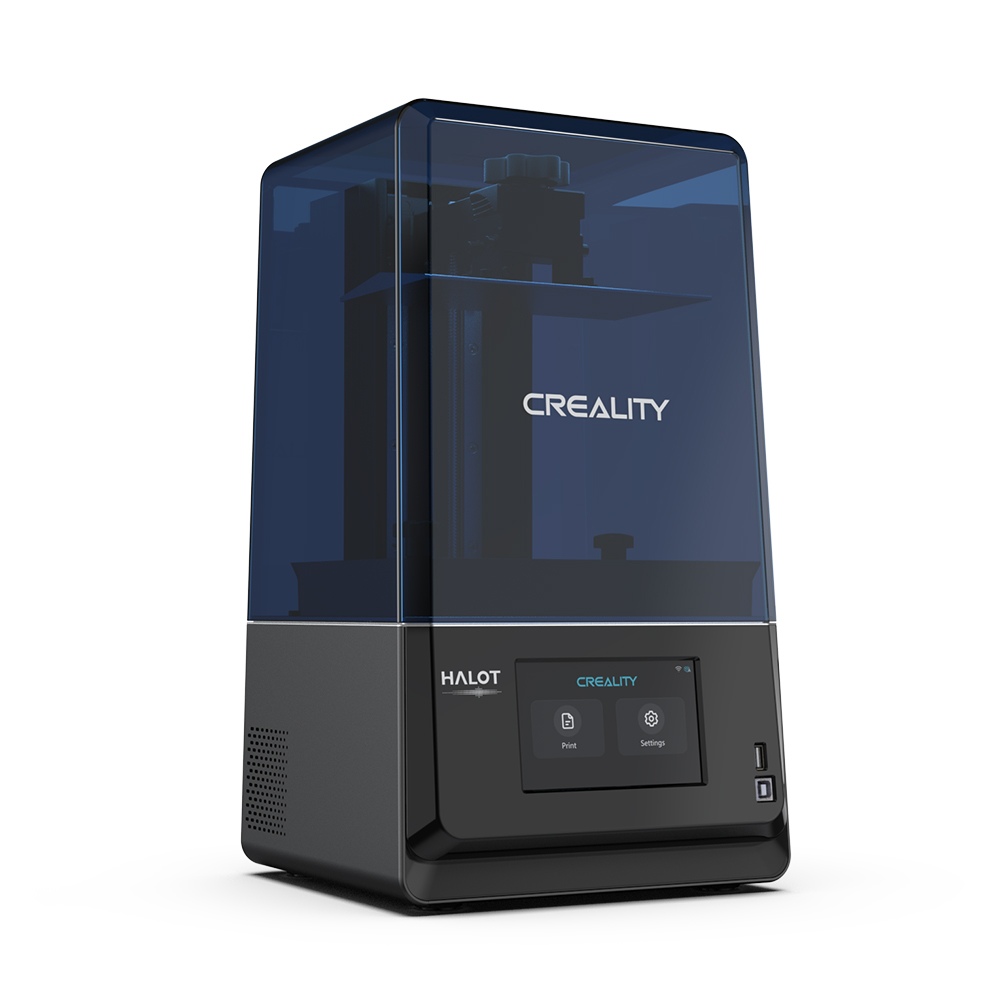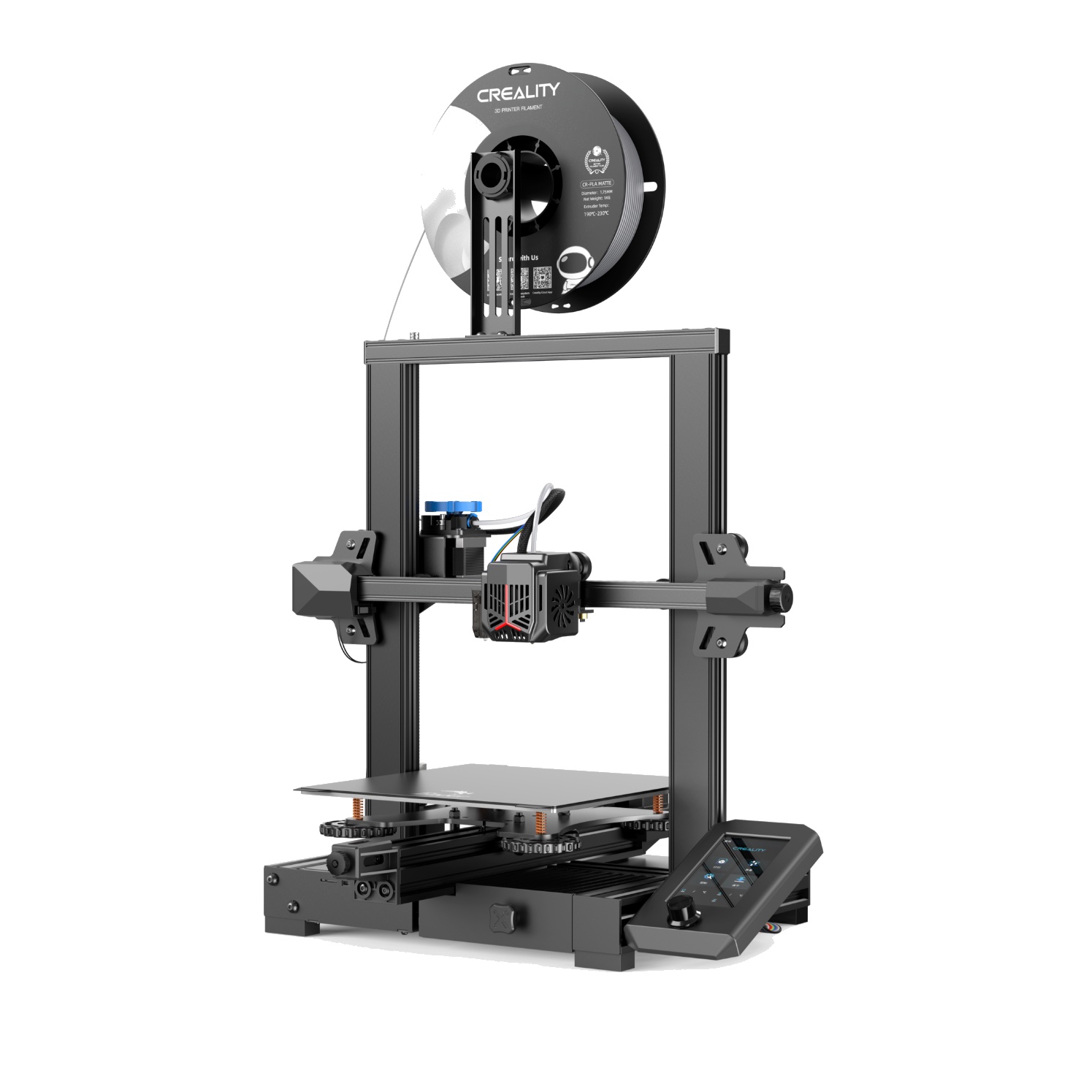Compare Halot One Plus vs Ender 3 V2 Neo
Comparison between the best 3D printers
Choose the best 3D printer at the best price. The cheapest 3D printers are here.
Buy a 3D printer here with 3D Fila.
 |
 |
|
| Model | Halot One Plus[BUY Halot One Plus] |
Ender 3 V2 Neo[BUY Ender 3 V2 Neo] |
| Printing Material | Resin | Filament |
| Buy Resin for Creality 3D Halot One Plus | Buy Filament forCreality 3D Ender 3 V2 Neo | |
| Estimated price | $399,00 | $310,00 |
| Manufacturer | Creality 3D | Creality 3D |
| Release Year | 2022 | 2022 |
| Print Volume [mm] | 102x172x160 | 220x220x250 |
| Printer Size [mm] | 236x245x416 | 438x424x472 |
| Weight [kg] | 6,8 | 9,8 |
| Power Loss Recovery | NO | YES |
| Maximum Resolution [mm] | 0,1 | |
| Processor | 4.2.2 mainboard | |
| Display | Display touchscreen 4,3'' | |
| Power Supply | ||
| Connectivity | USB / Wi-Fi | SD / USB |
| Operating systems | Windows, Mac, Linux | |
| Date of registration in the system | 2022-10-11 | 2022-12-09 |
| Release date | 2022 | 2022 |
| Extra features | Crealitys Halot-One Plus printer stands out for its 4K+ resolution that delivers sharp details and consistent surfaces. It features a fast and responsive 5-inch LCD interface, as well as easy-to-use Halot Box software. It offers Wi-Fi connectivity and remote print monitoring, as well as an integrated air filtration unit, a rare feature in this price range. The Halot-One Plus is designed for the prosumer market, combining high quality with advanced features such as Wi-Fi and air filtration. During testing, it stood out for implementing these features at an affordable cost, while maintaining functionality. It features an attractive design with a UV-resistant blue cover and a robust dual rail system for the Z-axis, ensuring smooth and consistent movements. The large LCD and high resolution of the LCD mask (4320 x 2560) are other strong points, allowing for fine details and textures in prints. | The Ender 3 V2 Neo printer stands out for its automatic bed leveling with the CR Touch system, ensuring high-quality initial layers. It features an all-metal Bowden extruder for increased durability and improved filament handling. Its flexible, PC-coated magnetic build plate makes it easy to remove prints and is durable and easy to clean. It also includes a new user interface with model preview and an updated gantry design. The Ender 3 V2 Neo maintains the same build volume and temperatures as the previous version, supporting popular filaments such as PLA and ABS. It features a quiet 32-bit mainboard and additional features such as a filament sensor, print recovery, simple 3-step assembly, an integrated toolbox, and belt tensioners. |
| Support for multiple colors and materials (AMS and CFS) | NO | NO |
Notes * |
||
| Cost-benefit | 8 / 10 | 6 / 10 |
| Hardware | 1.2 / 10 | 2.4 / 10 |
| Tela | . | . |
| Print volume | 3 / 10 | 3 / 10 |
| Performance | 9 / 10 | 0 / 10 |
| [BUY Halot One Plus] | [BUY Ender 3 V2 Neo] |
Conclusion |
| In comparing the Halot One Plus and the Ender 3 V2 Neo, both 3D printers present compelling features suited for different user needs, with a noticeable difference in functionality and application focus. The Halot One Plus excels in delivering high-resolution prints, thanks to its impressive 4K+ resolution, making it a strong candidate for those who prioritize detail in their work. It offers modern conveniences such as Wi-Fi connectivity, a user-friendly touchscreen, and an integrated air filtration system. This makes it particularly appealing for prosumers looking for advanced features at a reasonable price. On the other hand, the Ender 3 V2 Neo stands out for its practical design aimed at reliability and ease of use. Its features such as automatic bed leveling, an all-metal extruder, and a flexible build plate are advantageous for beginners and hobbyists who may prefer a straightforward setup and consistent print quality. Additionally, the inclusion of power loss recovery is a vital feature for users concerned about interrupted prints. However, while the Halot One Plus offers superior resolution and user-friendly features, the Ender 3 V2 Neo presents a balanced cost-benefit ratio and better support for filament-based printing, making it suitable for various common projects. In conclusion, the choice between these two printers largely depends on the user's specific printing needs and preferences. For high-detail resin prints, the Halot One Plus is the better option, while for those favoring versatility and filament options without compromising too much on quality, the Ender 3 V2 Neo is a solid choice. Ultimately, both printers are well-made with notable strengths, reflecting the varying priorities within the 3D printing community. |

